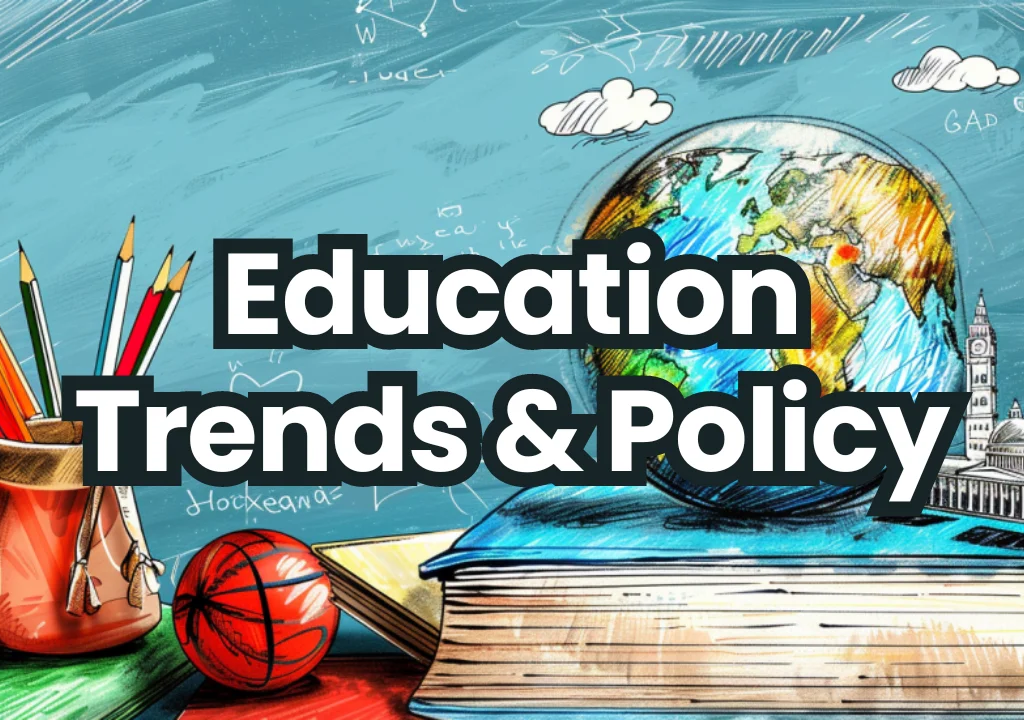Global Best Practices in Education
In an increasingly interconnected world, education systems play a critical role in shaping the future of nations. As countries aim to produce skilled, innovative, and adaptable individuals, they continually evaluate and refine their educational practices. Learning from successful international models offers many opportunities to improve local education systems. Countries like Finland, Singapore, and Canada have become global benchmarks due to their innovative approaches, consistent outcomes, and focus on student well-being. This article explores global best practices in education and how various nations can adopt and adapt these strategies to foster greater academic success and equity.
The Importance of Global Benchmarking in Education
Global benchmarking in education helps nations identify what works and why. It allows policymakers, educators, and administrators to understand the structures, pedagogical methods, and assessment systems that lead to higher academic performance and student satisfaction. The Programme for International Student Assessment (PISA), conducted by the Organisation for Economic Co-operation and Development (OECD), is one of the most widely cited international benchmarks for evaluating student outcomes in reading, mathematics, and science. The PISA rankings have spurred debates and policy changes worldwide, with countries eager to replicate the success of top-performing nations.
However, while global benchmarking is a useful tool, it’s important to recognize that each country has unique socio-economic, cultural, and political factors that shape its education system. Therefore, adopting best practices from other nations requires adaptation rather than direct transplantation.
Finland: The Power of Trust and Autonomy in Education
Finland’s education system is widely regarded as one of the most successful globally, despite—or perhaps because of—the absence of high-stakes testing. The Finnish approach emphasizes trust in teachers, equal opportunities for all students, and a well-rounded curriculum that prioritizes both academic and personal development.
Key Best Practices from Finland:
- Teacher Autonomy and Professionalism: Finnish teachers are highly qualified and trusted to make pedagogical decisions in the classroom. They undergo rigorous training (a master’s degree is required), and continuous professional development is a key component of their career growth. This autonomy allows teachers to tailor lessons to the needs of their students, fostering creativity and critical thinking.
- No High-Stakes Testing: Unlike many countries, Finland does not subject its students to frequent standardized testing. Instead, assessments are used as a tool to support learning, not to rank or label students. The lack of pressure from exams encourages a more relaxed and engaged learning environment.
- Focus on Equality: Finnish schools aim to provide equal opportunities for all students, regardless of their background. Education is free, from preschool through university, and there are extensive support systems for students with learning difficulties.
Singapore: Rigorous Standards and Consistent Excellence
Singapore’s education system consistently ranks among the top in the world, particularly in mathematics and science. The country’s focus on high academic standards, coupled with an emphasis on continuous improvement, has made it a global leader in education.
Key Best Practices from Singapore:
- A Strong Foundation in Early Education: Singapore’s early childhood education is designed to give every child a strong foundation in basic literacy, numeracy, and social skills. The government invests heavily in preschool education to ensure that children start their formal schooling with the necessary tools for success.
- Emphasis on STEM: Singapore places a strong focus on science, technology, engineering, and mathematics (STEM) subjects. The curriculum is designed to foster analytical thinking, problem-solving, and innovation, which has contributed to the country’s technological and economic advancements.
- Continuous Professional Development for Teachers: Like Finland, Singapore places a high value on teacher training and development. Teachers are encouraged to engage in lifelong learning and are provided with opportunities to pursue further education and attend workshops. This commitment to professional growth ensures that educators remain up-to-date with the latest teaching methods and technologies.
- Streaming and Differentiation: Singapore’s system allows for some degree of streaming, where students are placed in different academic tracks based on their abilities. This ensures that students receive instruction that is suited to their academic level, allowing for more personalized learning.
Canada: Emphasizing Inclusivity and Diverse Learning
Canada is another nation that consistently performs well in international rankings. Its education system is known for being inclusive, student-centered, and focused on developing critical life skills.
Key Best Practices from Canada:
- Inclusive Education Policies: Canada places a strong emphasis on inclusive education, ensuring that students from diverse backgrounds, including those with special needs, receive the support they need to succeed. Public schools in Canada are required to accommodate students with disabilities and provide individualized education plans.
- Student-Centered Learning: Canadian education focuses on developing students’ critical thinking, creativity, and problem-solving skills. Teachers encourage students to explore their interests, ask questions, and engage in collaborative learning. This approach fosters a sense of ownership over one’s education and motivates students to take an active role in their learning process.
- Integration of Technology: Canadian schools have embraced technology as a tool for enhancing learning. Students have access to digital resources, and many schools use technology to facilitate personalized learning experiences. This integration prepares students for the digital workforce and ensures they are equipped with the skills needed for the future.
Adapting Best Practices: Lessons for Other Countries
While it may be tempting to adopt successful educational models wholesale, it’s important to remember that what works in one context may not be effective in another. Countries looking to improve their education systems must consider local factors such as economic conditions, cultural values, and existing infrastructure.
Steps to Effectively Adapt Global Best Practices:
- Assess Local Needs: Before implementing changes, it’s essential to evaluate the specific challenges facing the local education system. This could involve conducting surveys, consulting with educators, and analyzing student performance data.
- Pilot Programs: Instead of nationwide reforms, countries can experiment with pilot programs that allow them to test new approaches on a smaller scale. This minimizes the risk of widespread disruption and provides valuable feedback for scaling successful initiatives.
- Invest in Teacher Training: Regardless of the model being adopted, teacher training is crucial to its success. Teachers need to understand the new methods, how to implement them, and how to adapt them to their classrooms.
- Engage Stakeholders: Successful education reforms require the involvement of all stakeholders—students, parents, teachers, and policymakers. Open communication and collaboration ensure that reforms are supported and understood at all levels.
- Monitor and Adjust: Education systems must be dynamic and adaptable. Even the best-planned reforms may require adjustments based on ongoing feedback and performance outcomes.
The Future of Global Education: Toward a More Holistic Approach
As we look to the future, it’s clear that education systems worldwide will need to evolve to meet the demands of a rapidly changing world. Globalization, technological advancements, and shifting labor markets mean that students need more than just academic knowledge—they need to develop critical life skills such as adaptability, creativity, and emotional intelligence.
Countries like Finland, Singapore, and Canada offer valuable lessons in how education systems can balance academic rigor with student well-being. By fostering inclusive, student-centered, and flexible learning environments, these nations have managed to prepare their students not only for exams but for life beyond the classroom.
For countries aiming to improve their education systems, the focus should be on creating adaptable frameworks that can be continuously improved based on emerging research and feedback. The goal should be to create an education system that is equitable, inclusive, and designed to meet the needs of all students, regardless of their background or abilities.
FAQs
1. Why is Finland’s education system so successful without standardized testing?
Finland’s success stems from its emphasis on teacher autonomy, student well-being, and a holistic approach to education. Teachers are highly trained professionals who are trusted to make decisions about how to best teach their students. Without the pressure of standardized testing, students are free to focus on learning rather than memorizing facts for exams.
2. What makes Singapore’s approach to STEM education so effective?
Singapore’s success in STEM education is due to its rigorous curriculum, emphasis on problem-solving and critical thinking, and strong early childhood education programs. Additionally, the government invests heavily in teacher training and continuous professional development to ensure that educators are equipped to teach these subjects effectively.
3. How can other countries adopt best practices from international models like Finland and Singapore?
Countries looking to adopt best practices from international models should start by assessing their own needs and challenges. Pilot programs can be a great way to test new approaches before scaling them. It’s also crucial to invest in teacher training and engage all stakeholders—students, parents, and educators—in the reform process.


